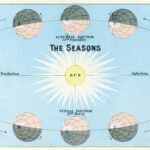You’re teaching an intro class; it’s three weeks into the semester, and you’ve just returned a high-stakes assessment to the students. The next time you look at your inbox, there’s an abundance of email from students wanting to make appointments because “they worked really hard and don’t know why they didn’t do well.” You’ve been teaching long enough that you know this pattern well.
You also know that when you probe those students about their difficulties, you’ll find their class notes are large, undifferentiated masses of text with few, if any, structural markers, like indentations or bullets. If you ask to see their textbooks, the likelihood is that nearly everything is highlighted. When you ask whether they recognize that the headings and subheadings indicate primary and subordinate relationships among the material, they look back in surprise. Many students who visit you have difficulty formulating clear questions or explaining what they’re struggling with. Some can articulate perfect definitions, reproduce diagrams, or provide detailed timelines, but they cannot explain their significance. And when faced with specific problems to solve, students report they are at a loss for where to even begin. There is frustration and doubt and confusion in their voices.
How do you help these students be more successful?
Recently, I wrote about my own difficulties with learning something new and how I came to recognize the many ways I am that intro student sitting in a faculty office having not done well on an exam or essay. Everything is a jumble of words without meaning, prioritizing information is impossible, and expressing a question is tricky. I don’t know where to begin, I get tired of thinking, and my anxiety is sky high.
Reflecting on that novice state has helped me understand what is missing as I struggle with all the newness. First and foremost, it’s a landscape view of what I’m learning. It’s the shape and relationship of the parts. Is this a linear or cyclical process? Does it branch depending on circumstances? Is there a hierarchical relationship among the components, or are they at an equivalent level? Has the discussion changed topics or just shifted focus? I need the picture on the puzzle box to start making sense of the thousand pieces of incoming information.
Unfortunately, most of the experts eager to help me don’t start with that big picture. They focus on the details, the specifics of a process, and the explanation of terms. It’s not because they don’t want to help; it’s because that big picture is so much a part of their understanding that it has become invisible to them. They’ve spent years completing the puzzle and know how each piece relates to every other; when they focus on a detail, that larger picture is always in their unconscious background. Novices, however, don’t have that conceptual framework.
And you know what? As an expert, I too am guilty of focusing on the details and not the framework when teaching. My topic might be the organelles in a cell. I’m prone to highlight the individual units, their unique structures and functions. I provide what I think are clear explanations and well-labeled diagrams. But I can overlook emphasizing the relationships, patterns, and context of the units. I assume, if I think about it consciously at all, that the students will construct the larger picture as a consequence of working with the details.
Those students who subsequently do well on exams and essays have acquired some or most of this large picture. They’ve absorbed it from reading the text, looking at diagrams, and studying their notes. The best students have a sufficiently sophisticated conceptual framework for the information that they can apply what they know to new situations.
The students who don’t do well, despite putting in the effort, are often the ones with undifferentiated notes, overly highlighted texts, and difficulty knowing where to start with a problem. These deficiencies, in fact, are symptomatic of the students not yet having found a way to organize the content. And without a framework, the details may not make any sense.
My own recent experiences as a total novice have given me a much deeper appreciation for both how challenging it is to develop that schematic, structural understanding and how essential that understanding is to deep learning. Again, I’ve recently experienced being the student who has studied "really hard” and still not done well. I’ve had that fantastic experience of the pieces suddenly making sense when I grasp, or am told, the overall structure.
What does this mean, then, for my teaching? Making the overall structure of my content obvious is going to help my students in their learning. How do I do that? Here are a few ideas.
- Use graphic organizers to illustrate content. These are excellent ways to identify main and subordinate concepts, visualize relationships, and clarify dimensions like time and space. Yes, there are outlines and concept maps, but also think more creatively. How about Venn diagrams, tree charts, timelines, event chains, compare-and-contrast tables, network diagrams, storyboards, and grid matrices? Think about how the organizers you see in daily life might be relevant—for example, metro maps, infographics, pie charts, density maps, and word clouds. A web search will help you identify an abundance of ideas.
- Explain your organizer. This is key to making the knowledge structure obvious. Why did you choose it over other options? What meaning do components such as circles, lines, colors, arrows, font changes, and connectors have? What aspects of your content does the organizes underemphasize or leave out?
- Refer to your organizer repeatedly and often. Start and finish a topic with a discussion of the larger picture. Highlight where you are in the organizer as you move through a class period, a unit, or even across a semester. Overtly mark changes in focus or topic by referencing the organizer.
- Consider when it is best for you to provide the organization and when it is best for students to select or complete the organizer. Early in a learning process, it may be most helpful to students for you to define a structure. As students accumulate knowledge and experience, asking them to do the organizational work will consolidate and solidify their learning. Other options are to give students an empty organizer and ask them to complete it or to give them a completed organizer and ask them to interpret it.
- Explicitly teach students the common structures in your discipline (e.g., cause and effect, hypothesis-evidence-conclusion, change over time, iterative cycles, major categories and subtypes). Train them to think about how those common structures might be useful when confusion sets in. Is this a time sequence? Is this a concept and a set of examples? Is this a dependency relationship among the items?
- Ask someone to visit your class and talk about the value of graphic organizers. These visual tools can play many roles in the learning process beyond helping students create a schematic organization of the content. They can also assist in problem solving, planning for high-stakes assignments, and application of knowledge to new situations. Additionally, they provide an additional format to text and discussion, making the content more readily accessible to a variety of learners.
Here’s one more thought. Don’t be surprised if thinking about knowledge organization in your field is a bit difficult at first. Experts don’t always recognize or have the natural ability to articulate how they’ve organized their vast knowledge. It could take work on your part, so be patient with yourself. Also recognize that if you, as the expert, are having difficulty articulating your schematic understanding for yourself, you most likely aren’t making it visible to your students.
Amy B. Mulnix, PhD, currently is the interim associate secretary in the national Phi Beta Kappa office. Prior to that, she served as founding director of the Faculty Center at Franklin and Marshall College in Pennsylvania, where she supported faculty across the arc of their careers and the scopes of their academic identities.













